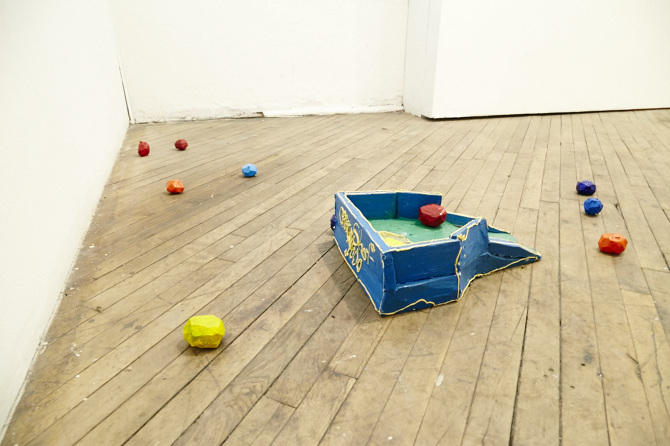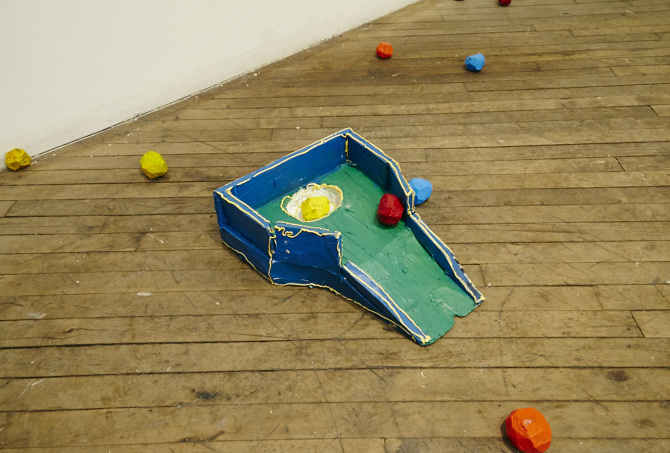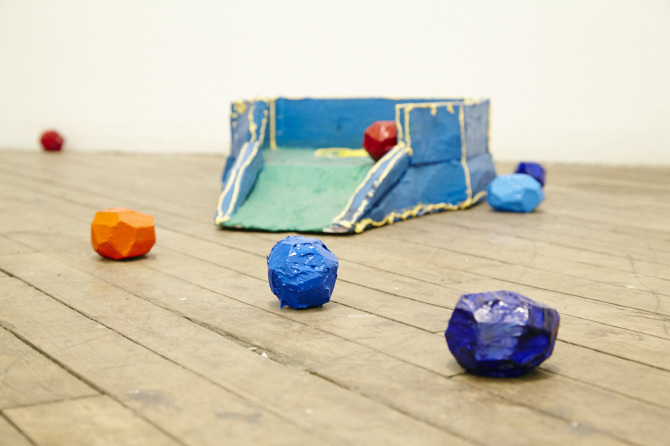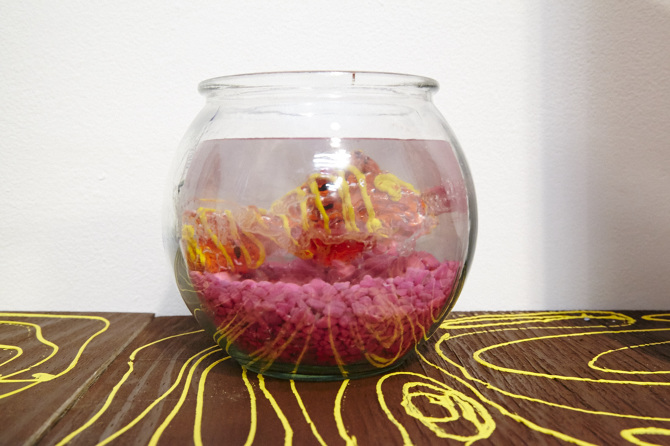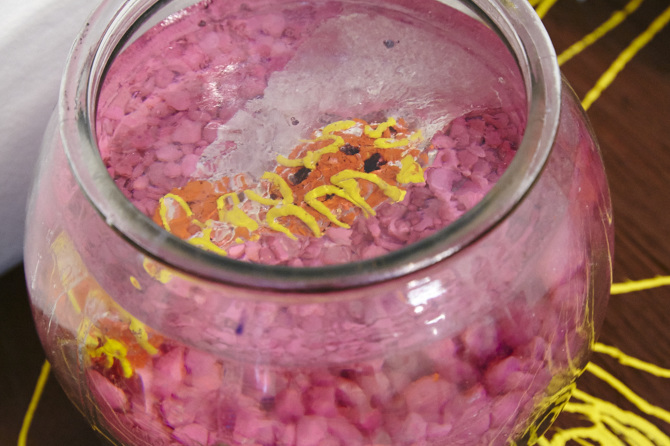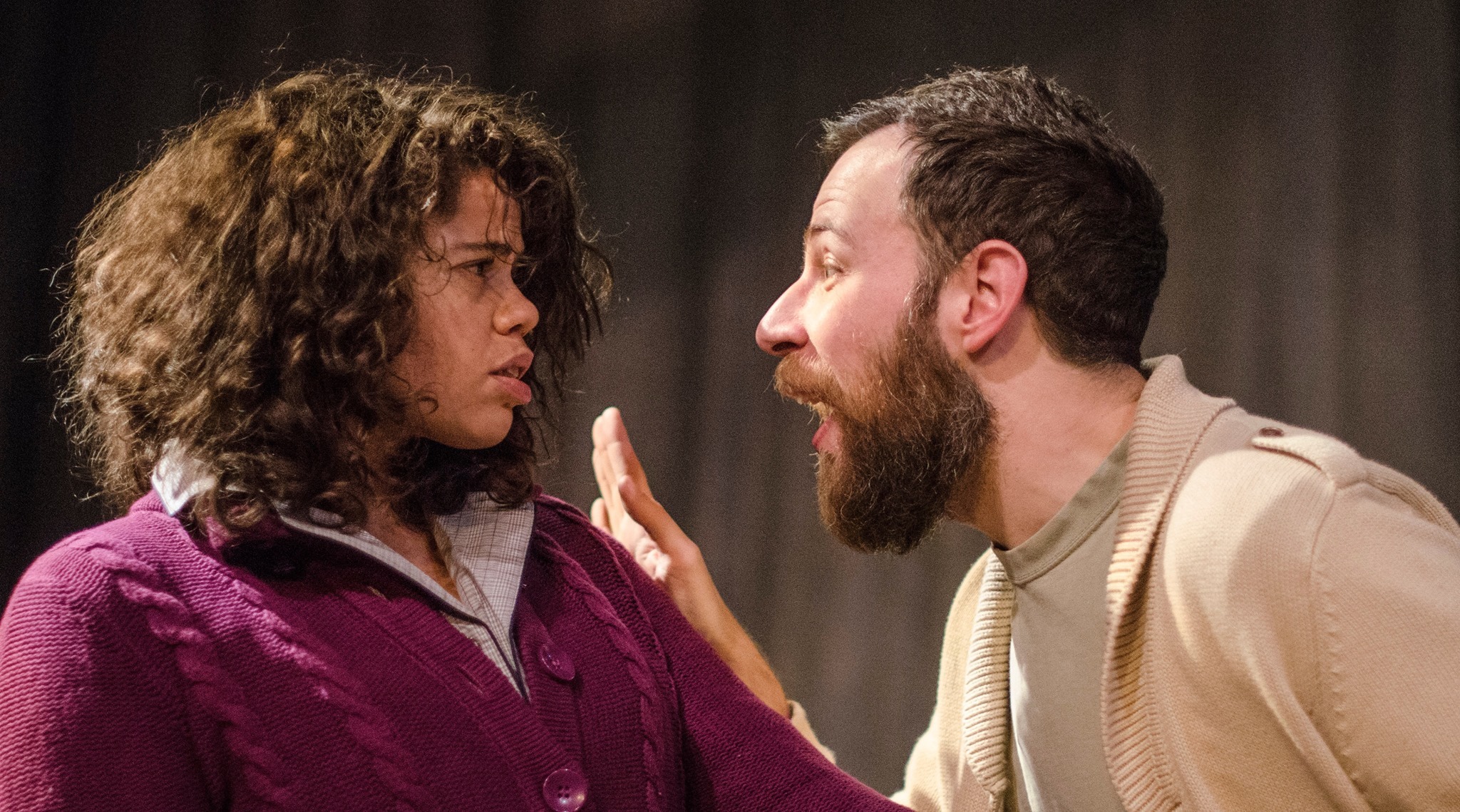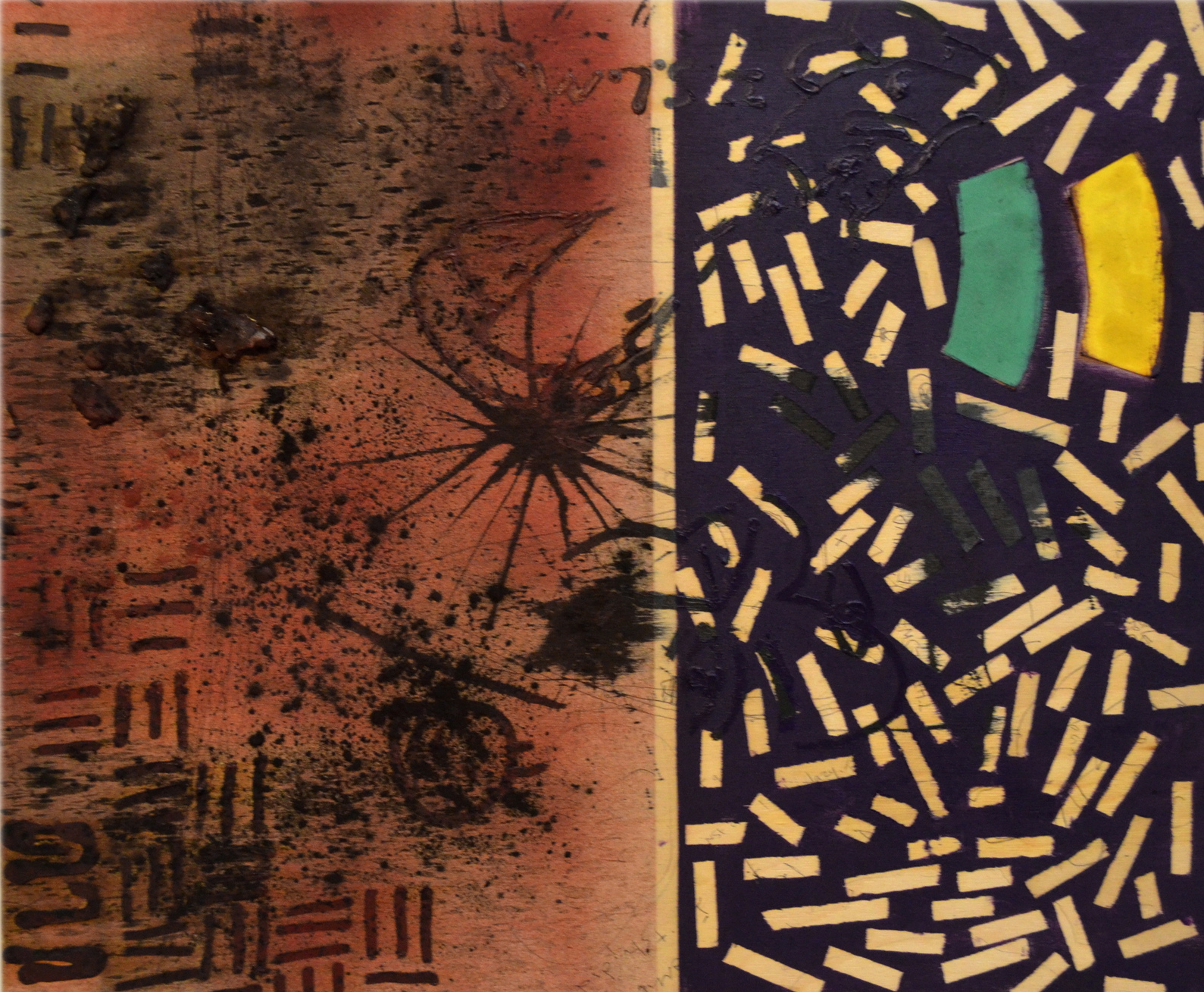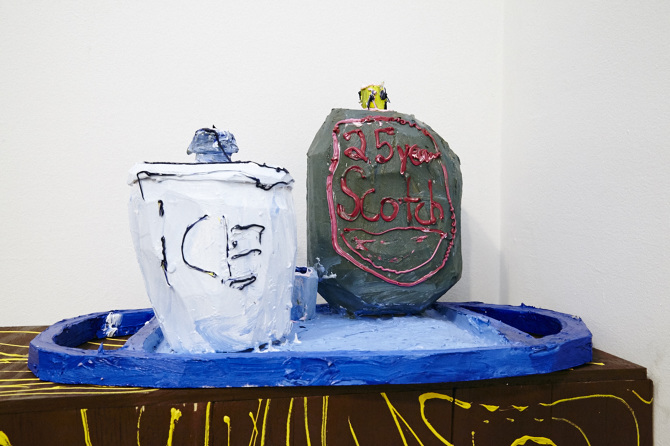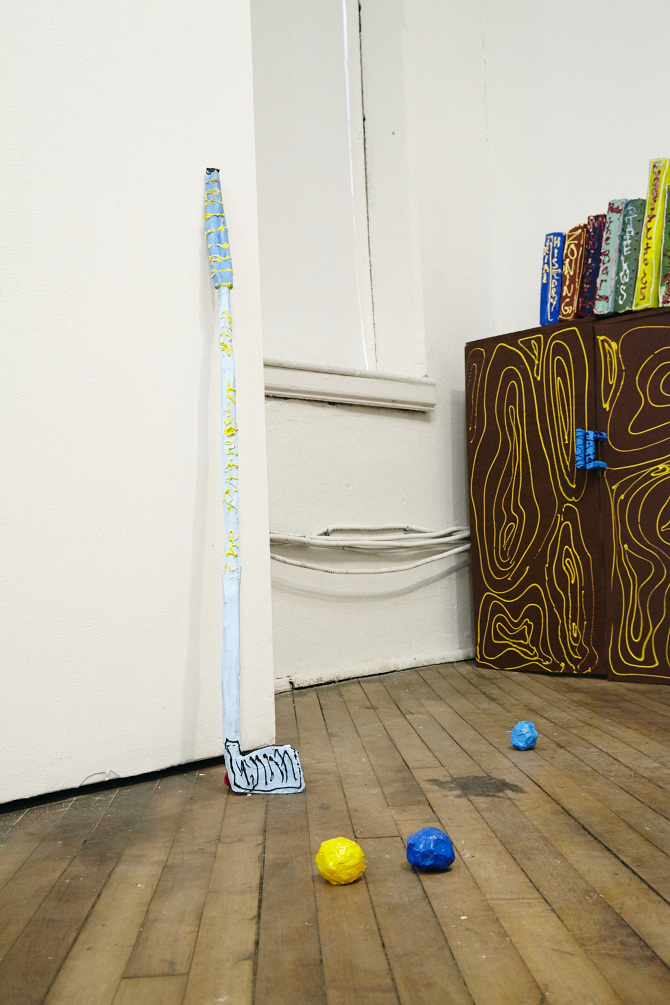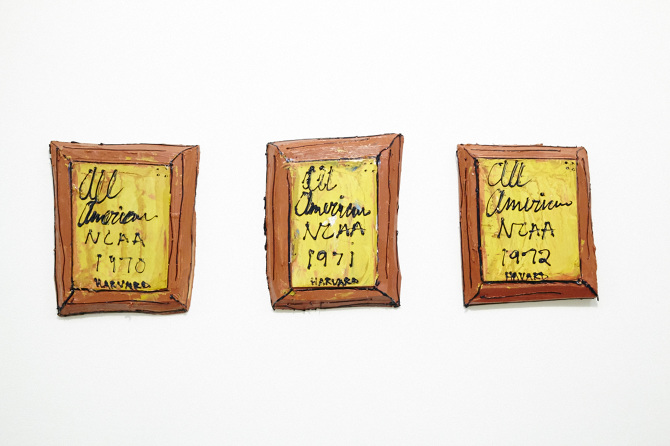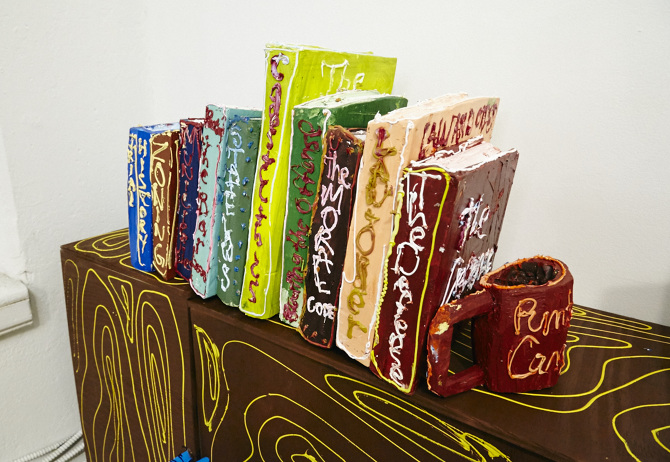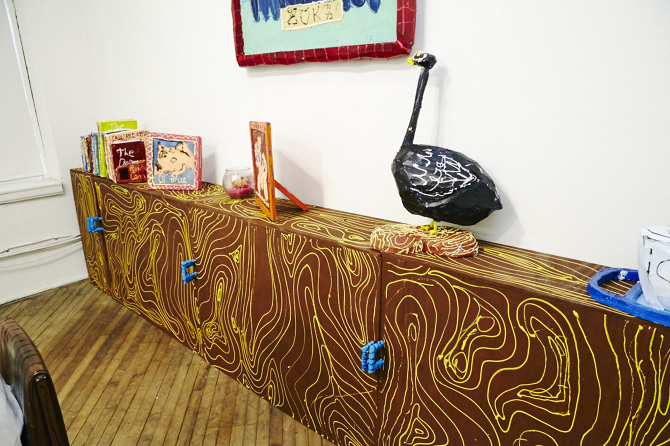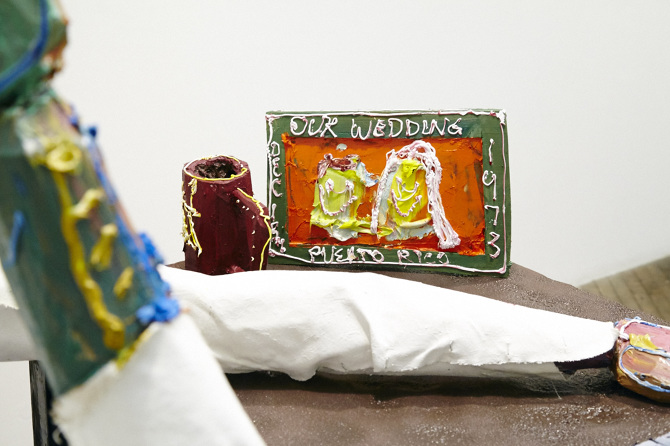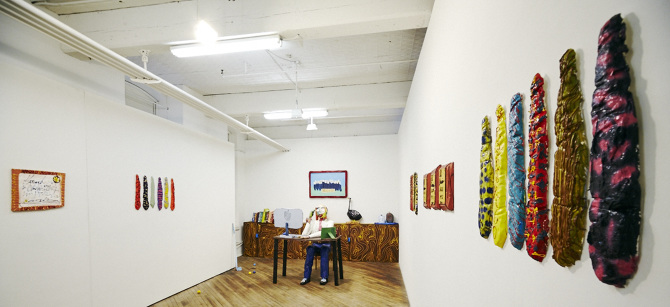An Interview with David Eassa about his new solo exhibition at Vox Populi in Philadelphia, up through March 29.
In My Mother Always Told Me I’d Grow Up To Be A Lawyer, Dave Eassa questions adulthood and success through the trappings of powerful office culture. Rendered unfamiliar through his characteristic style, which incorporates thick, gloppy oil paint, cartoon meets Bay Area Figurative sculpture, and immersive environments, the imagined elements of a rich and powerful lawyer’s office take on new meanings.
Dave Eassa lives and works in Baltimore, MD. He received his BFA from the Maryland Institute College of Art in 2013. Recent solo exhibitions include The End of Spring at Big Law Country Club in Brooklyn, NY and Dreamhouse at Lil’ Gallery in Baltimore, MD. Group shows include Sophiajacob (Baltimore, MD.), Artisphere (Roslyn, VA.), Marianne Boesky Gallery (New York, NY.), artSTRAND (Provincetown, MA), Reh Kunst (Berlin, Germany), Current Space (Baltimore, MD.), and Casa das Artes Criação Ambiente Utopias (Sao Tome, Sao Tome and Principe). In 2014 his work was published in New American Paintings No. 112 and he was awarded an Individual Artist Grant in Sculpture from the MD State Arts Council. He currently facilitates the program “A Different Kind of Home,” which brings the arts to long-term incarcerated men at the Maryland Correctional Institute in Jessup.
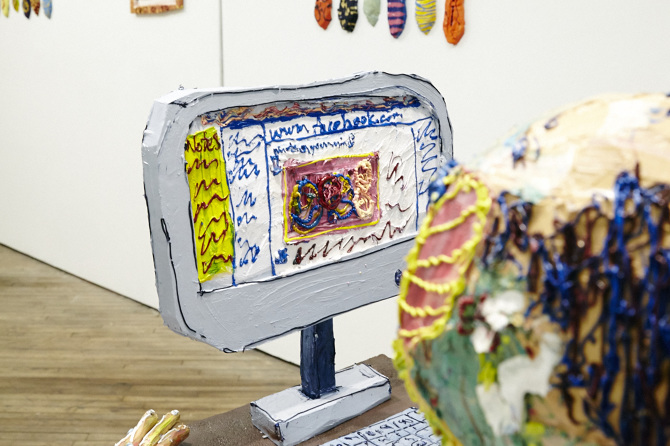
BmoreArt: How did you get a show at Vox Populi in Philadelphia? What was the process of applying like?
Dave Eassa: Vox puts out a call for guest artists I think once, but it also could be twice a year, where Vox member artists curate two separate groupings over two months. Each month has four concurrent solo shows. I was fortunate to be able to meet and show with great artists Heather Leigh McPherson, Julia Klein, and Theo Mullen, who I did not know beforehand but was paired with from a Vox member artist.
B: Can you talk about the concept behind the show? How did the idea come about? Why is it important to you?
DE: Since the start of 2015, I’ve been volunteering at the Maryland Correctional Institution in Jessup, which is a medium security federal prison. I teach a class of eight men every Monday for two hours. Working with them is really amazing,. I really think all people would benefit from trying this but definitely artists. Most people have no idea what the inside of a prison is actually like, what the word incarcerated actually looks like. Most civilian’s ideas of prison is derived from television and movie stereotypes, maybe a viral article here or there.
Much of my work has dealt with my personal narrative of around social constructs. I think a lot about what many of us are incarcerated by – in small or large doses. I think a lot about 9 to 5 culture, monetary and material goals, falling into the cookie cutter line, the suburban life timeline (college, job, marriage, kids, dead), crazy things like that. Finding ways to be your own human being in this crazy world. I wonder how you can ever really be free. A lot of the time I make work as a personal system of checks and balances, like if I recognize why this is crazy, then I can make sure I am not slowly and unknowingly becoming my worst nightmare. The show “My Mother Always Told Me I’d Grow Up To Be A Lawyer” thinks about a lot of these things.
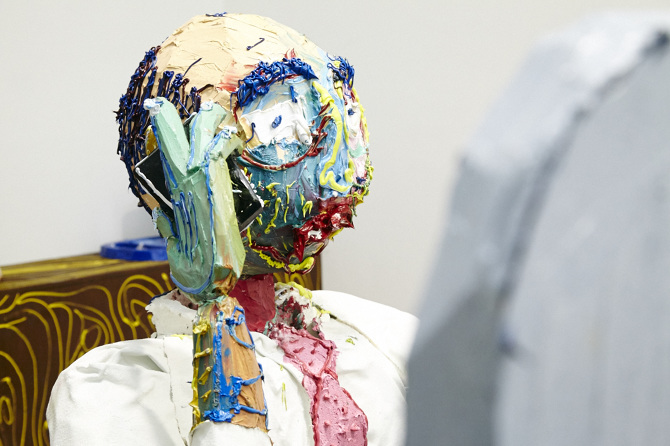
B: How was the Philly audience different than Baltimore? What is different about showing there from your point of view?
DE: Philly is tight! Vox Populi is a huge, amazing space that is extremely well organized and so great to work with. I have no idea how they do it so well. That entire building is really awesome and full of many spaces doing cool things. Philly, from my perspective, seems to be fortunate like Baltimore to be able to experiment and have artist run spaces in a really large supportive community of makers. Jessica Hans and Miranda Pfeiffer, who are both extremely talented and pretty recent MICA grads, just had a really beautiful show on the first floor at Savery Gallery [in Philadelphia]. I think showing there was cool because I got to meet people and have them react to my work with no baggage, what I mean is they knew nothing about my previous work, so the conversations were straightforward.
B: This work is hilarious. Are you ever afraid making ‘funny’ work will make people take it less seriously?
DE: I think humor plays a lot and a little at the same time. The color, texture and just ridiculousness of the figures and objects, may initially lead to that, but then more time on the eyes makes you realize there is some real and sometimes depressing ideas being brought up. But it’s also not always depressing, I think my work talks about the ups and downs of living your life, the work is very real and very rooted in a lot of basic human experience, things we all know too well. Sometimes it’s a celebration and sometimes it sucks. I’m not really afraid of making funny work, I think what I am trying to talk about with my work is serious so I don’t think about it too much.
B: What does it mean to you to create ‘painted’ sculptures? Or sculpture out of paint? Why do you want to merge these two practices? How does it affect your thinking or production process?
DE: This is something I just kind of let happen. I don’t think about making sculptural paintings or two dimensional paintings, I have always viewed myself as a painter who makes things. Sometimes ideas are best served on canvas, sometimes the idea is best to be made with sculpture. It was just a merge that was bound to happen in my work. I love both ways of working and really just let it be fluid and specific to each piece.
Author Cara Ober is Founding Editor at BmoreArt.
All photos courtesy of the artist.
